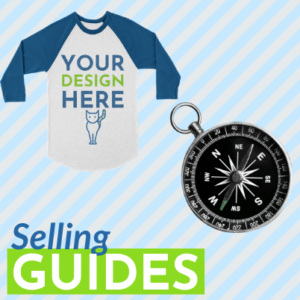Top 5 Fundamental Concepts Of Website Design
When designing your eCommerce website, attention must be paid to every detail of the site.
A good website experience affords your business a lot of benefits, such as attracting new customers and keeping existing customers.
Your website has a tremendous effect on the identity of your brand; therefore, optimizing your site for eCommerce is essential.
Below, we will be discussing five fundamental concepts of an eCommerce website design.
The Header
An eCommerce store that is easy to navigate is essential to a company when trying to enhance traffic and generate sales.
Creating an intuitive user experience by making navigation features simple to use and responsive is one of the ways to ease navigation.
According to a survey by Clutch, ninety-four percent of respondents said that an easy to navigate website is one of the most vital features of a site.
When creating a website that is easy to navigate, special attention has to be paid to the header of your website because this is often the first place your visitors/customers look at when they visit your eCommerce site.
The header is also a critical factor in creating the first impression of your company’s brand.
When considering features to be placed on the header, you have to understand that the header is crucial; therefore, research should be carried out before placing any element/function on the header.
With the help of tools like Google Analytics, you can make accurate and data-backed decisions on what features should be displayed on your header.
eCommerce Site Elements
The headers of a typical eCommerce site contain elements that can be grouped into four categories. These include:
- Primary navigation features
- Secondary navigation features
- Search option
- Promotions and offers
The primary navigation
The primary navigation feature on the header should be able to convey the breadth of the product or service offering on your site.
These products/services offering should be neatly organized into dropdown menus and be visually stimulating.
This is vital because a lot of first-time visitors might not know your product offerings, therefore being able to see what you offer quickly is essential in order to keep them on your website.
If your business retail women’s and men’s fashion, they should be well categorized into different departments and be easy to reach. An example is new arrivals, dresses, matching sets, jeans, jumpers, lingerie, sweaters & jackets, and so on.
The secondary navigation
The secondary navigation features should include things like links to the shopping cart, the wish list, physical locations, account sign-up/sign-in, newsletters, and Customer support.
Visitors need to have quick and easy access to the shopping cart and wishlist, which is an essential feature in helping them complete a purchase.
ECommerce stores that have physical locations should have a store finder incorporated into their header.
Accounts sign-up/sign-in are typical features of eCommerce sites and are usually located on the header.
Search option
Having an advanced search option on the header is very important because it helps visitors quickly locate the product/service they are trying to find.
Placing a search bar at the center or corner of your header depends on how vital conducting a search is to your site.
Promotions and offers
Offers and promotions are a sales technique that attracts visitors to your site and encourages them to complete sales.
A lot of successful eCommerce sites make these offers a prominent feature of their header so as to entice visitors.
When designing your site, it is best you consult with experts and carry out a lot of research.
Quality Content
High-quality content is very vital to the success of an eCommerce website.
Successful companies understand the need to keep up with the latest trends while incorporating different types of content when designing their eCommerce website in order to create awareness and visibility for their brand.
Making sure every content on your site is useful and not filled with irrelevant information is very vital.
Blog Posts, product demo videos, product descriptions, newsletters, ratings & reviews, and FAQs are relevant contents needed when designing an eCommerce website.
Blog Posts
Blog Posts are one of the most important ways to drive visitors to your site.
It also helps your website increase its SEO ranking and forge better customer relationships.
Quality blog posts have the ability to catapult your brand in any industry because posting relevant, and fact-based content creates a positive reputation for your brand, which gives many benefits.
Demonstration Videos
Demonstration Videos are an excellent way to demonstrate and describe your products/services to both existing and potential customers.
A survey that was carried out stated that seventy-two percent of individuals prefer watching demo videos to find and learn more about a product/service.
Products Demos helps show customers that a product is authentic, explains how to use the product effectively, and discloses the features and benefits of a product.
Newsletters
Newsletters are an essential part of your website design.
They afford your business and brand a lot of benefits because of how effective it is.
Some of the benefits of incorporating newsletters into your eCommerce website design include creating new leads for your business, improving customer relationships, open other sales channels, and increase the exposure of your brand.
Depending on the objective and aim of your company, your newsletters can contain countdowns, video content, GIF images, personalized recommendations, and so on.
Rating and Reviews
Ratings and Reviews are an integral feature for any eCommerce website.
They have proven over the years to be a powerful marketing tool and can establish the credibility of a brand among customers and competitors.
Some benefits of ratings and reviews include creating visibility for your brand, which attracts customers and visitors to your site, thereby generating traffic for your website, which in turn increases sales.
They have a powerful effect on decision making for customers, give our business access to customers, and helps gather feedback on products and services.
The FAQ
The FAQ needs to be in your eCommerce website design because it quickly provides your customers with answers to questions that are frequently asked, which in turn helps improve the visitor/customer experience on your site.
When putting together questions for the FAQ of your eCommerce website, it should be very specific, depending on the aim of your company.
Using professional services like Online Writers Rating to help put together an FAQ helps to answer the questions of visitors/consumers effectively.
Every content on your eCommerce blog needs to encourage conversation, whether directly and indirectly; therefore, there are some important factors that need to be considered when creating content which include:
- The demographics of your target audience
- How current and trendy the content is
- Originality of content
- The trustworthiness of content
- How easy it is to understand
- Keywords and SEO ranking
The benefits of a well written, relevant and informative content are invaluable when designing content for your eCommerce website because it goes a long way in establishing your brand as a leader in the market.
Privacy and Security
Making sure your eCommerce website is secure and safe from malware, ransomware, cyber-attacks, hacking, and every other kind of invasion is very important to the success of your business and should be a top priority when designing your website.
ECommerce websites are very valuable to hackers because of the amount of personal information they hold about their customers.

There are several standards eCommerce websites must comply with for it to be considered safe, secure, and build customer trust. Some of them include:
- DoS and DDOS protection
- HTTPS authentication
- SSL and TLS authentication
- Use of Firewalls
- PCI-DSS compliance
- SSL Certificates
However, to avoid a security breach on your website, you have to consider some things when designing the site, which includes:
Strong Passwords
The Use of Strong Passwords: This is the most crucial consideration because over eighty- one percent of all security breaches in companies are due to passwords that are weak or stolen.
Making sure that you, your employees, and customers practice safe passwords protection standards is vital.
Making sure your passwords are not less than eight characters, never sharing your passwords, and using different passwords for different sites is vital in keeping your website safe.
Device Protection
Protecting Your Devices: This is another important consideration because an unprotected device can get into the hands of the wrong person and cause massive security breaches and, consequently, financial loss to your eCommerce company.
Trademarking
Trademarking The Company Name And Logo: Trademarking your company name is a vital security need for your website because it makes sure no other company or person can use your company logo or name, which is essential when trying to build a strong brand identity.
Secure Platform
Secure eCommerce Platforms: The use of secure eCommerce platforms such as Shopify can help save a lot of monetary costs that will go into securing your website because such platforms make it their duty to keep all eCommerce stores on their platforms safe from cyber attacks.
Stay up to Date
Keep Your Site Updated: keeping your website up to date with the latest advancement in security/technology goes a long way in making sure your site is secure from hackers and malware.
It is essential that when designing your eCommerce website, you invest in serious security measures because the result of having an unsafe site can have devastating consequences on your brand’s credibility and finance.
Mobile Optimised
When designing your website, it needs to be optimized for use on mobile devices.
The use of mobile devices to access online sites has been steadily increasing over a couple of years.
The graph below shows the percentage of people that accessed their devices through their mobile vs. desktop device between Dec.2018 to Dec.2019.

An optimized mobile website should be able to:
- Fit the screen dimension of a mobile device
- Viewed in portrait and landscape mode
- Have zoom, pinch and swipe capabilities
- Have large and readable text
- Links to other mobile-optimized sites
- Load images quickly
Benefits of optimized mobile eCommerce sites include:
- Better user experience for visitors and consumers.
- Generate more traffic to your eCommerce site
- Increase the average time visitors spend on your site
- Increase revenue for your eCommerce business
Visually Captivating Design
Visually captivating design is a fundamental and sometimes overlooked aspect when designing your eCommerce site.
Visitors judge your website within milliseconds of visiting your site and can choose to remain on a site if the overall design is pleasing to the eye.
Research must be done before deciding on specific colors, fonts, shapes, and placements because having an excellent first impression on your visitors is vital.
Some of the things a visually appealing site does are increasing the possibility of visitors returning to your website while having a positive impact on the perceptions of your brand that have to do with trust and reliability.
Important factors that have an effect on the visual appeal of your site include:
- Font type
- Font size
- Image placement
- Tables and forms
- Menus
- Links
Conclusion
The user experience of a customer/visitor on your eCommerce site is very vital if you plan on having a successful business.
Close attention needs to be paid to every aspect of your website in order to make sure nothing is left to chance.
Hiring professionals to design your site or to make use of respectable eCommerce platforms goes a long way in ensuring you build your brand identity while at the same time, increase revenue.
Author: Tiffany Porter


